In Their Footsteps – The Martyrs of Nan Lou
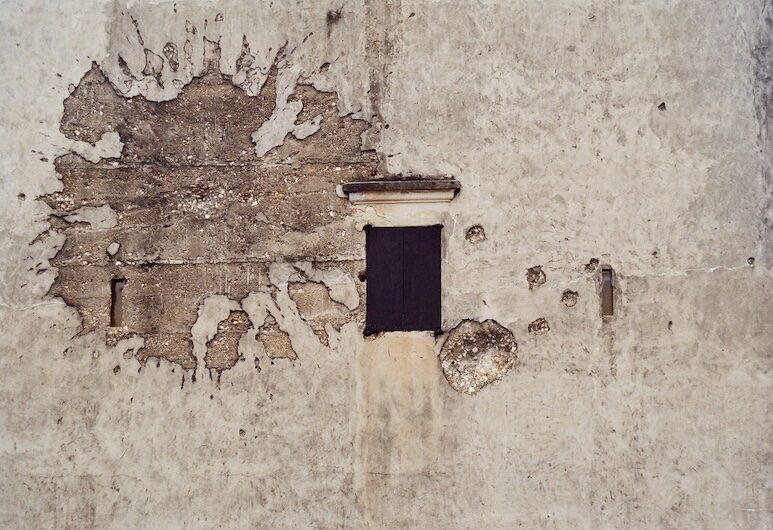
The theme of security and protection has been prominently featured in the diaolou’s that I have visited in Kaiping. But Nan Lou is perhaps the only diaolou that came with an official history in the defense of the nation.
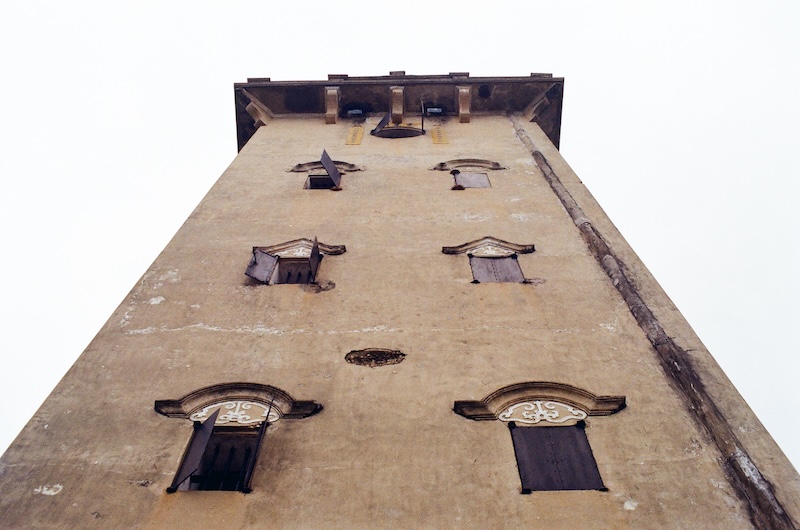
We called a car to take us to Nan Lou. There were a whole lot of cars trying to get into the parking lot of the Chikan studio city. We had to call twice before we managed to meet our driver. Nan Lou is perhaps a 15 minute drive from Chikan.
From afar, the Nan Lou stands tall and proud as a testament of war history in a dedicated garden space. While its appearance does not stand out from the rest of the diaolou’s I have seen, it breathes history in a wholly different manner, as shown in the permanent scars on its exteriors.

These are the bullet holes inflicted on the building by the invading Japanese troops of World War II. The moving heroism of the Situ brothers that defended this tower is what makes the Nan Lou a must-see diaolou in Kaiping.
A History of Martyrdom
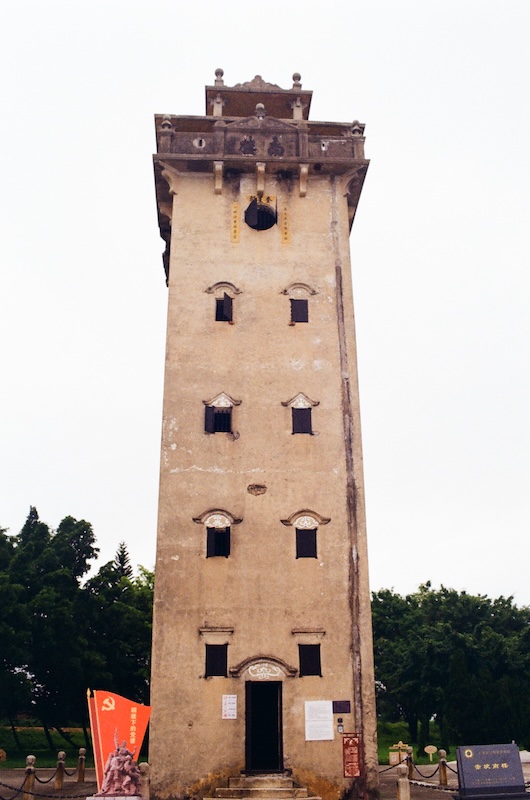
Like so many of the diaolou’s in Kaiping, Nan Lou was meant to guard against bandits. Built in 1912, Nan Lou stood at a location of critical strategic value, ashore the Tanjiang River and the neighboring road network into Chikan.
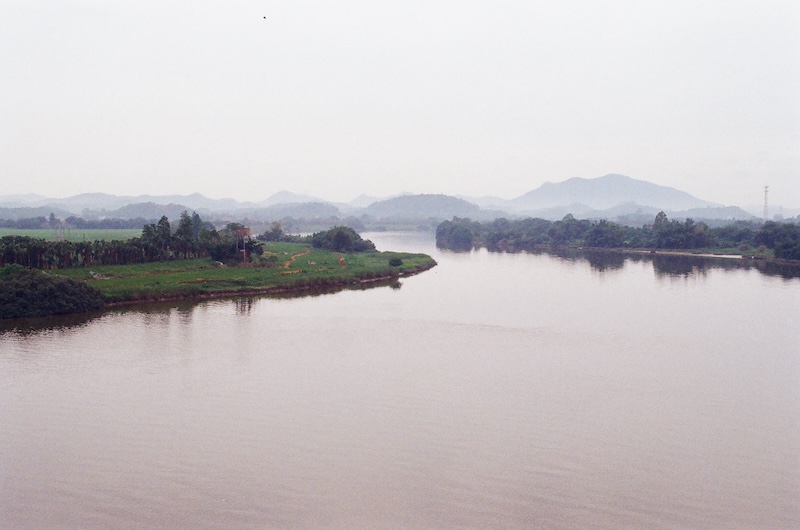
Photo: View of Tanjiang River from Nan Lou.
The Situs built this 7-story reinforced concrete tower. Nan Lou was fortified. On each floor there were gunholes, observation decks, machine guns and searchlights.

Situ Xu, leading six other members of the Kaiping Situ Self-Defense Forces, raged a staunch resistance here in Nan Lou against the onslaught of the Japanese into Chikan. Situ Xu was an overseas Chinese himself. He lived in Nanyang (Southeast Asia) for a long time, and returned to his homeland specifically intending to organize the resistance movement against Japanese invasion. He set up the Kaiping Situ Self-Defense Forces, who managed to stall Japanese advances in this area by winning a few battles in 1944 and 1945.
On July 17, 1945, the Japanese forces had closed in on Chikan. They surrounded this area with additional troops arriving on the Tanjiang River. They ambushed the Nan Lou at night. The team led by Situ Xu vowed to fight to their deaths.
The 7 celebrated heroes were Situ Xu, as captain, Situ Bing, as ammunitions officer, Situ Nong, Situ Yao and Situ Yu, as machine gun officers, Situ Xuan, as the clerk for the team, and Situ Chang, as the intelligence officer.
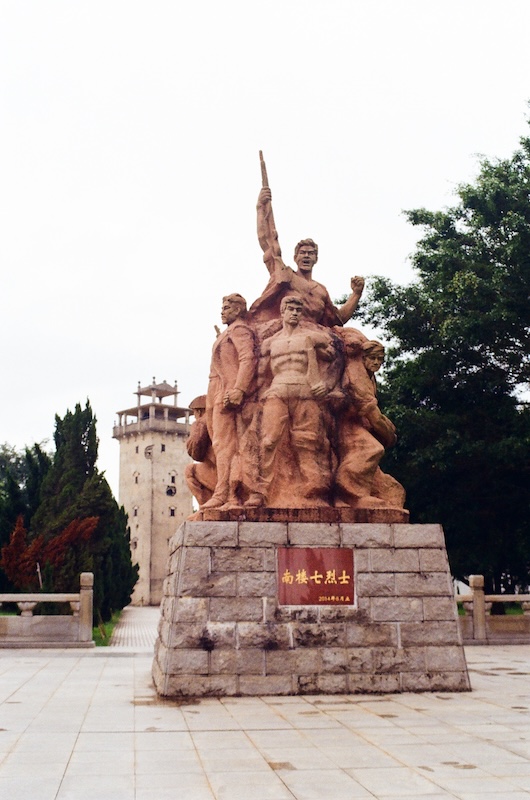
In Nan Lou they lasted 7 days and 7 nights of intense fighting against the Japanese troops approaching from land and water. There was no one to come to their rescue. As they were isolated in this tower, their food, water and ammunition ran out. Defeat was certain, but the 7 teammates were resolved. They wrote a joint statement as their final words, prepared to leave behind a testament of their kindred spirit. After days of fighting, the Japanese troops failed to claim Nan Lou. They decided to launch toxic gas bombs into the structure. This first attempt at gas bombing was thwarted by a south-blowing wind current.

Photo: The Japanese toxic gas bombs destroyed this window and its metal rail.
Our 7 heroes did, inevitably, meet the cruelest of fate. On July 25th, 1945, they succumbed to a series of toxic gas attack. They lost consciousness and the Japanese troops took them for a trial at the Japanese commander’s headquarters. Upon their refusal to surrender, the Japanese forces tortured them to death and mutilated them. They displayed their bodies outside of the Situ Library in Chikan. Thereafter, the Japanese simply tossed their remains into the Tanjiang River.
The villagers searched along the shores of Tanjiang River, and managed to find 5 of the 7 bodies for a proper burial at Gaozui Village, a location facing both the Tanjiang River and Nan Lou.
This story moved me to tears. Surely, in all kinds of war writing, be it a matter of ideology or actual fighting, the writers of museum texts in China tend to melodramatize the narrative. But taking the mere facts as they were presented, one would see a kind of heroism that arose only from the deepest of love for the homeland.
And it was in Nan Lou that I felt the soul of Chikan.
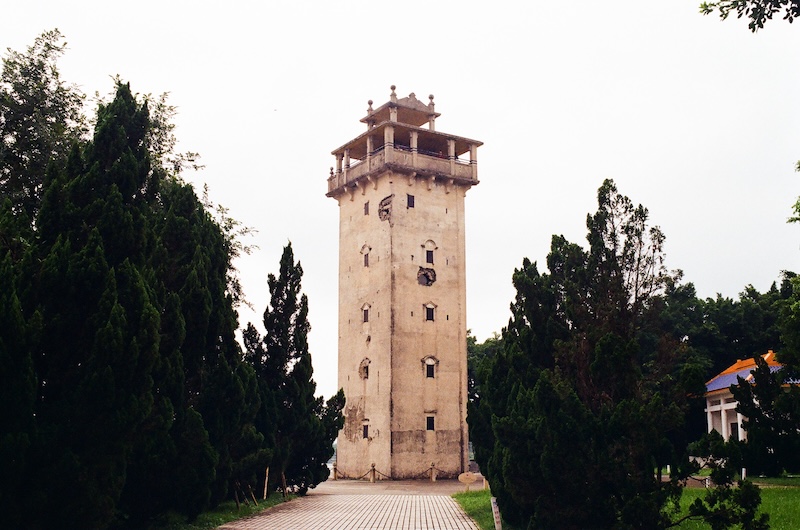
Sources
Descriptions on site at Nan Lou.
